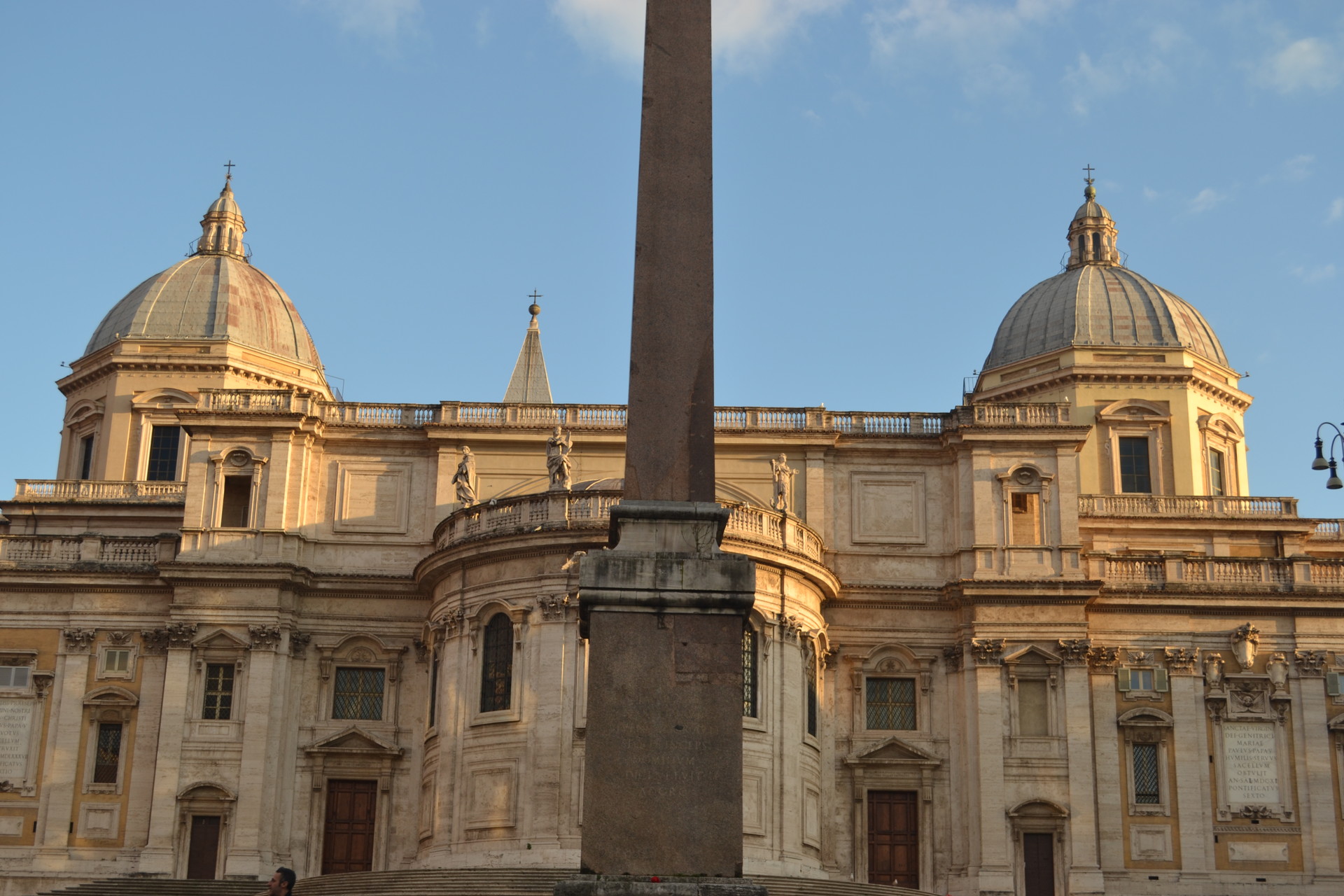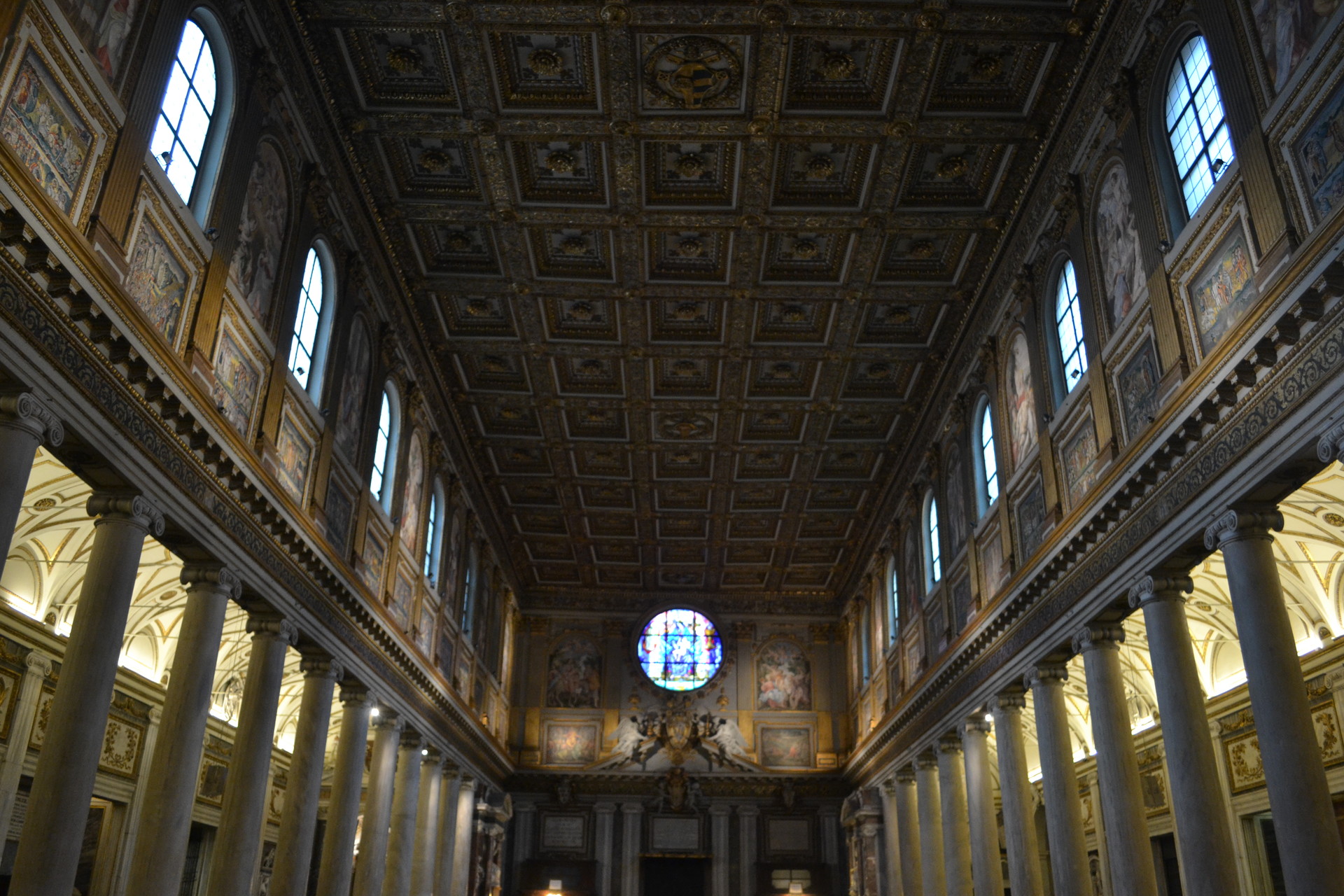L'Esquilino - 5/7 hills of Rome
The Esquilino is the largest in terms of height and length. It is formed of three different peaks: Opius, Fagutal and Cispius. Cispius is the most important of the three as it is where Santa Maria Maggiore is situated.
History of the Esquilino:
The Esquilino is situated right on the edge of Rome. It had always been included in the Servian walls however it was always on the border. In fact its name derives from the Latin esquiliae which means suburbs.
Just before the medieval times the Esquilino was home to many important villas. Then during the medieval times many religious convents were built here. In the seventeenth century, more and more villas were built here such as Villa Palombara. In this villa the Porta Alchemica (also called Magic Door) was built and today still stands and is available to see in Piazza Vittorio Emanuele. Today, the Esquilino is seen as a very residential area filled with important historic monuments.
What to See in the Esquilino:
Santa Maria Maggiore:
I have driven passed this Basilica numerous amount of times and had actually never given it much importance - then I went on a walk with my father around the esquilino and decided to enter this church which is nominated one of the best basilicas of Rome. It is the only paleochristian structure to stil stand in Rome. It was built under Pope Sisto II's request in the fifth century. It is a very long structure with the internal divided in three naves separated by 21 columns on each side. I was completely stunned, this church is beyond incredible. The ceiling is beautifully decorated in gold and the different coloured marble really stands out. Not to mention all the mosaic and frescos. The way this basilica been preserved and it's richness in decoration make of it a masterpiece.



Stazione Termini:
I am pretty sure that you will cross Stazione Termini if you happen to go to Rome as it is pretty much the center of all transport. The first station was built in 1863, but in 1868 they started to work on improving it. The works ended in 1874 and the name was changed from "Stazione Centrale delle Ferrovie Romane" to "Stazione Termini". This name stems from the "Terme di Diocleziano" which are located very close to the station. In the twentieth century, after the war, the Station was changed again. This time architecture was neoclassical and was completed in 1950. It is a building containing arches and collumns - It is quite simple yet well constructed. It is one of those buildings that either you love or hate - However i find most architecture fascinating.
Arco di Sisto V:
Sisto V was one of Rome's popes in the sixteenth century. He wanted an aqueduct to be built for the pilgrims who would have invaded Rome during the Giubileo in 1575 (The Giubileo for the Roman Catholics is a year of reconciliation and conversion). This aqueduct was called Aquedotto Felice - named after the pope's birth name, and when it was finally completed, he had this arch created in 1585 as a celebration. It is a beautiful historic monument which you can see from Piazzale Sisto V.
Via Merulana:
Via Merulana is one of the most important historic roads in Rome. It connects the Basilica di Santa Maria Maggiore to the Basilica di San Giovanni in Laterano. These two are 2/3 most important Basilicas in Rome. The pope Sisto V used this road for his religious processions.
Piazza Vittorio Emanuele:
Piazza Vittorio Emanuele is the largest square in Rome. Since the end of the nineteenth century this square has been used as a market for food, tobacco and other bits and bobs. The square now holds the "Porta Magica" and remains of the fountain "Ninfeo di Alessandro".
Porta Alchemica:
The Porta Alchemica, also known as Porta Magica is an antique structure that used to be the entrance to Villa Palombara. It is the only one out of five entrances to still stand and it is worth seeing. There are a few legends connected to this Door however my favorite one is one written in 1802. The story speaks of a pilgrim who stayed in the Villa Palombara for the night. At night, he went to the garden and searched for a herb capable of making gold. The next morning he is said to have disappeared through a door, never to return again. But legend says he left behind a piece of paper containing symbols and equations useful for the transformation of this herb into gold. Therefore Massimiliano Palombara had these symbols engraved on the door hoping one day someone would translate them for him.
Ninfeo di Alessandro:
The remains of this fountain are situated in Piazza Vittorio Emanuele. The fountain also takes the name of Trofei di Mario and was built on request of the Emperor Severus. It is said to have been dedicated to Caio Mario for his trophies won across his dictatorship. It is an impressive antique fountain who had the function of distributing the water from the main aqueduct to the secondary canals.
Porta Maggiore:
Porta Maggiore is one of the antique gates of the Aurelian Walls. It is a very important historic monument that relates back to ancient Rome. This gate is located at the converging point of eight aqueducts that transferred water into the city. The gate is also strategically positionned as a bypass of two important ancient roads: Via Paenestina and Via Labicana.
Photo gallery
Content available in other languages
- Italiano: L'esquilino - 5/7 colline di Roma
- Español: El Esquilino - 5/7 Colinas de Roma
Want to have your own Erasmus blog?
If you are experiencing living abroad, you're an avid traveller or want to promote the city where you live... create your own blog and share your adventures!
I want to create my Erasmus blog! →




















Comments (0 comments)